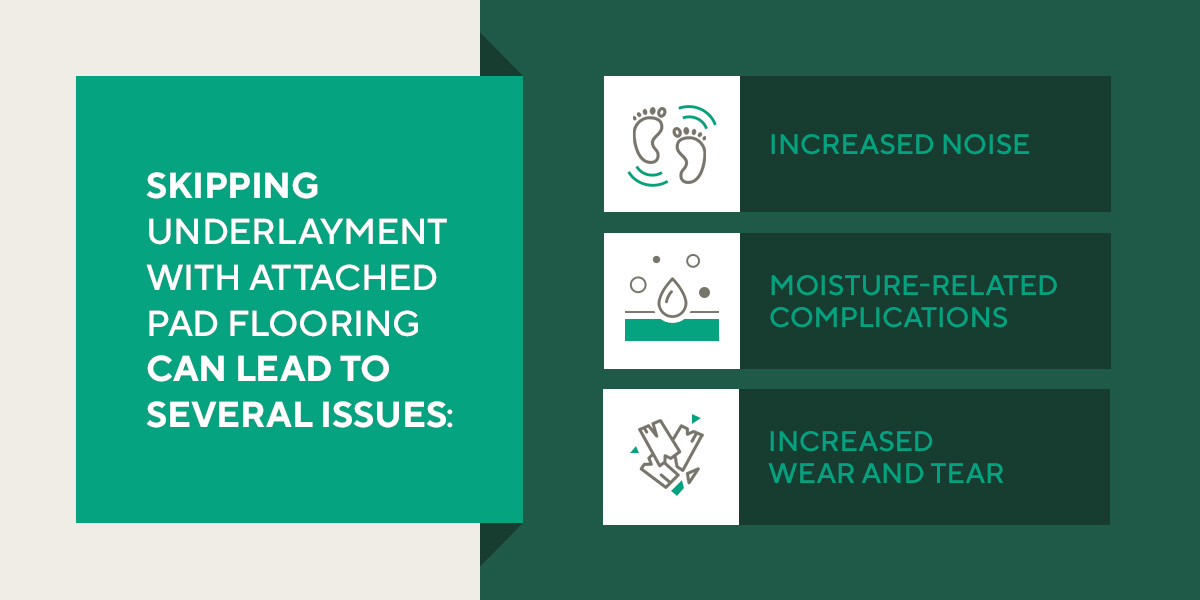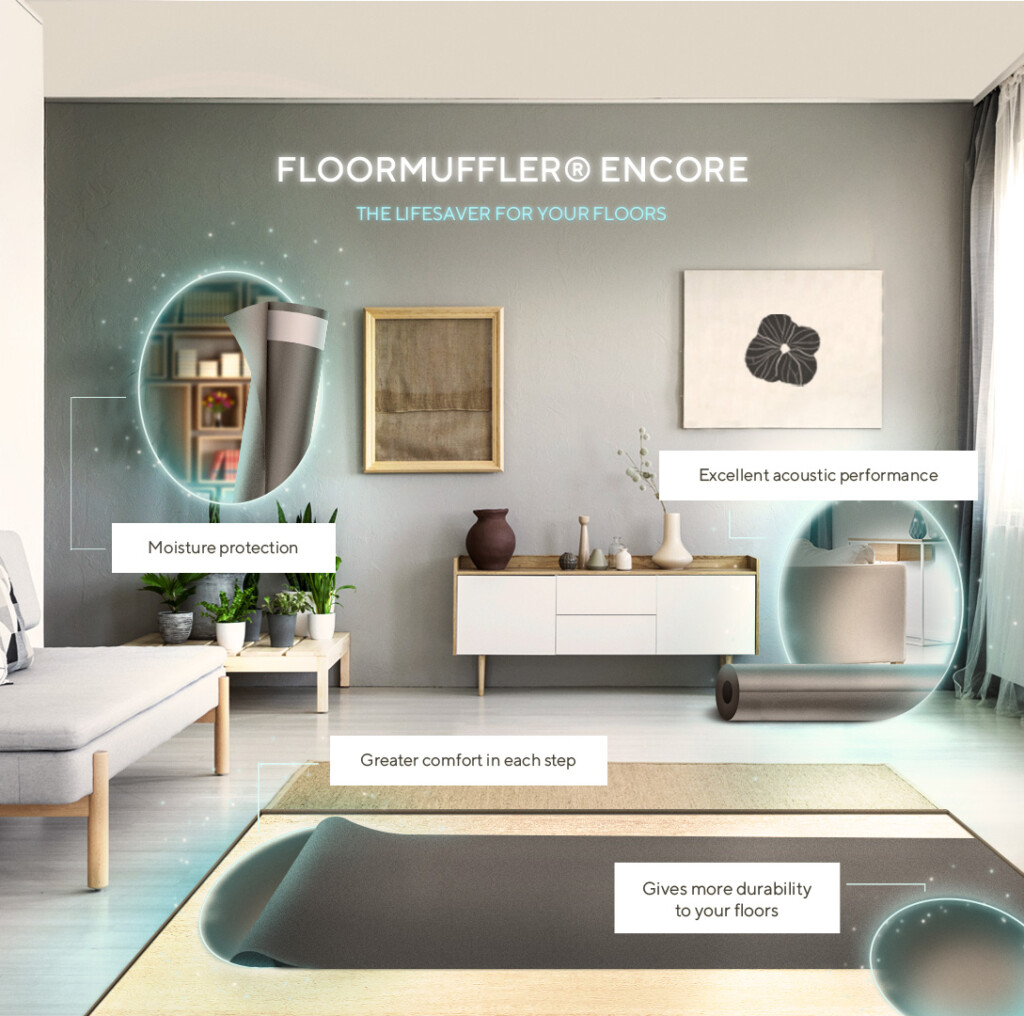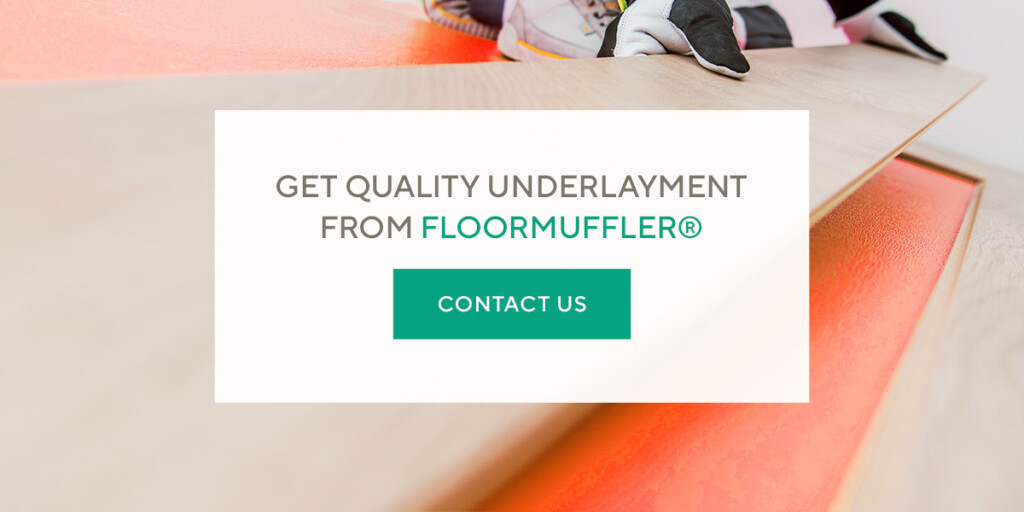Should I use an underlayment with attached pad flooring?
Is Underlayment Necessary for Attached Pad Flooring?
Attached pad flooring is a type of flooring that includes a padded material directly connected to the bottom side of the flooring plank. This material is usually made of foam or cork.
You can commonly find attached pads on certain types of luxury vinyl flooring, such as SPC, WPC and Rigid Core Flooring. Some manufacturers now offer pre-attached pad options for laminate, cork, bamboo and engineered wood.
What Benefits Does an Attached Pad Provide to the Flooring?
There must be a reason why manufacturers are putting a pad on the back of almost every type of flooring. The reason for an attached pad goes beyond the fact that this innovative solution is popular and profitable for manufacturers. The attached pad helps to limit the transfer of noise from one floor to another, improving the acoustic performance of the flooring system.
Despite these enhancements, there is a common misconception that an attached pad replaces the need for a traditional flooring underlayment. While you may save time shopping and installing your floor if you skip the underlayment, you will not achieve optimal performance and longevity for your floor.
Why Should I Use Underlayment With Attached Pad Flooring?
Installing a premium underlayment with attached pad flooring can significantly improve the performance of the flooring system.
The first improvement you will notice is the superior acoustics of a premium underlayment. Attached pads are generally made from thinner, low-quality materials that simply cannot dampen sound.
Since attached pads do not cover the floor’s locking mechanism, sounds and vibrations can easily escape through the seams where the planks meet. In fact, attached pads generally do not have the acoustic performance required for installations in multifamily buildings and apartments since homeowners’ associations require exceptional acoustic performance for these installations. That type of performance can only come from a premium acoustic underlayment.
Perhaps the most important reason for using a premium underlayment is that attached pads do not form a complete moisture barrier. Each flooring plank has its pad, and the pads of adjacent planks are not connected, so a seam separates them.
Since each plank of the attached pad flooring has a seam separating it, moisture can easily slip between them, leading to moisture damage. A premium underlayment includes a moisture-proof lip and tape system to close off the seams of the underlayment pieces and prevent moisture from damaging the floor.
Adding a premium underlayment to an attached pad flooring installation has some other noticeable benefits. Premium underlayments can also add warmth to the flooring system and level out minor imperfections in the subfloor.
What Are the Consequences of Not Using Underlayment With Attached Pad Flooring?

Skipping underlayment with attached pad flooring can lead to several issues:
- Increased wear and tear: Not using underlayment with attached pad flooring can result in a lack of durability. Without this layer, you may face costly repairs to fix the moisture-related challenges like warping or buckling, that underlayment helps to mitigate.
- Increased noise: One of the most significant is the lack of noise reduction. Without an underlayment, you may notice more sound when walking on floors. Remember that underlayment helps to absorb sound, so without it, footsteps and other noises can become much louder.
- Moisture-related complications: Underlayment acts as a barrier against moisture that can seep through the flooring planks. Without a full moisture barrier, mildew or mold can more easily develop, and it can be a massive challenge for houses in high-humidity areas.
Do I Need a Special Type of Underlayment for Attached Pad Flooring?
There are some imperative factors to consider when selecting the proper underlayment for your attached pad flooring. First, if an underlayment is included, the attached pad flooring manufacturer may not uphold the flooring system’s warranty if an underlayment is included. Always check with the flooring manufacturer to verify that they approve of the underlayment you selected for your installation.
You also want to consider the thickness and density of the underlayment. You will want to avoid underlayments that are too thick and spongy. There is such a thing as too much cushioning. A thick underlayment with low density will compress when weight is put on the flooring system, causing the flooring planks to bend and ultimately damage the locking mechanism. Using a thinner, high-density underlayment is better to support the flooring system. This will provide a strong foundation and limit bending from the flooring planks.
The next factor to consider when selecting the best underlayment for your attached pad flooring system is the acoustic performance of the underlayment. Premium underlayments include sound-dampening technology that limits the transfer of impact and airborne noise from one floor to another. A premium acoustic underlayment can mitigate sounds such as footfall, chairs dragging on the floor, music and television noise. When selecting an underlayment, make sure that the underlayment has exceptional acoustic abilities.
Moisture protection is also a significant factor when selecting an underlayment for attached pad flooring. You want to choose an underlayment that is a complete moisture barrier. Many premium underlayments include a lip and tape system at the seams. This system prevents moisture from escaping through the seams where two pieces of underlayment meet, forming a proper moisture barrier.
Be careful when reading product packaging. Although moisture protection is essential for your flooring system, some underlayments lack this feature. Make sure you select an underlayment that offers premium moisture protection.
How Do You Install an Underlayment With Attached Pad Flooring?
There are multiple techniques you can use to install an underlayment. In a nutshell, you’ll need to:
- Prepare your subfloor: While an underlayment can significantly benefit your flooring system, it can’t correct all your floor’s imperfections. If you have large gaps or low spots, now’s the time to fill them to help level your floor. In addition, ensure that your floor area is clean, dry and free of debris before any installation can take place.
- Roll out the underlayment: After preparing your floor, you need to lay out the underlayment across the subfloor. It is recommended that the underlayment be rolled out in the opposite direction from where you plan to install the floor planks. Ensure that your underlayment covers the whole area.
- Seal the seams: At this part of the installation process, you can use the included lip and tape system to secure the seams. Sealing the seams is essential as it helps create a complete moisture barrier, protecting water from your subfloor from passing down to your floor.
- Install the attached pad flooring: The last step of the process involves neatly laying your flooring planks on top of the underlayment. While laying, you may also need to trim certain planks so that they seamlessly fit around any preexisting cabinets. Remember to follow the manufacturer’s instructions during your installation.
What Is the Best Underlayment for Attached Pad Flooring?
We outlined the characteristics of an underlayment suitable for attached pad flooring. Now, we have to find an underlayment that meets the criteria. The floorMuffler® Encore underlayment has all the recommended qualities, making it ideal for attached pad flooring.
floorMuffler® Encore is a 1.1 mm high-density cross-linked polypropylene foam that provides superior acoustic performance, a complete moisture barrier and stability for the floor’s locking system.
Adding a premium underlayment like floorMuffler® Encore to your attached pad flooring system can significantly increase the life span of your floors. floorMuffler® Encore has been tested for durability with many attached pad flooring systems and is backed by many of the world’s most reputable flooring manufacturers. Independent testing labs have also performed acoustic tests on floorMuffler® Encore, indicating that attached pad flooring systems with floorMuffler® Encore deliver industry-leading acoustic performance.

Get Quality Underlayment From floorMuffler®
So, what is the final verdict? Should you use an underlayment with attached pad flooring? Yes, you certainly should. Just make sure that you select the right underlayment for the installation. If you are looking for superior acoustics, moisture protection and support for your floor, then floorMuffler® Encore is the best-performing underlayment for your attached pad flooring installation.
With floorMuffler® UltraSeal lip and tape system, floorMuffler® Encore is easy to install in residential and commercial applications. The industry’s highest-rated underlayment for vinyl plank flooring is available at The Home Depot stores.
